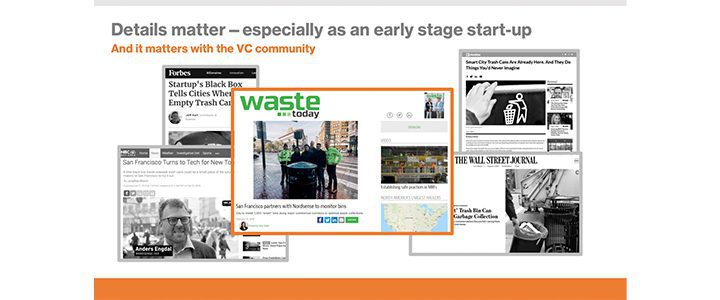
Think back to the last really great book you read. Do you remember the plot, the hero or even the outcome? Chances are you’re nodding your head yes. This is because our brains are wired to remember engaging stories but have a hard time with data and facts.
For early-stage startups, knowing and appreciating this difference is at the core of a strong public relations plan, according to Plat4orm CEO Valerie Chan. Valerie discussed this topic during her virtual presentation, Top PR Tools & Tactics for Early Stage Startups, at the Nasdaq Entrepreneurial Center last month.
Often, founders of new companies are so busy laying the groundwork or handling operations that brand messaging becomes an afterthought. But to have the innovative impact many of these startups seek, Valerie notes it is critical not to tell your story in a vacuum.
What does that mean in PR speak? The art of telling your story to a wider audience—not just the sector-specific players that know your product—is achieved by aligning it with a trend. “Timing really matters here,” Valerie says. Early-stage companies should be thinking about where they can insert themselves into an existing conversation and what pressing problem their product solves.
The key to aligning yourself with an existing trend or news story is recognizing public relations is not advertising. When a PR campaign starts to work and companies are put in touch with a journalist or influencer who wants to tell the story, “this is not an opportunity to sell them something,” Valerie emphasizes. Startups should look to be a resource and lean into their industry knowledge to add commentary, make forecasts, or opine on relevant topics, thereby calling attention to their brand indirectly.
Valerie also spent some time delving into types of press and what startups should know about different content verticals. “The goal here, especially as a founder of an early stage company, is to find an audience that cares about your product or service,” she said. While it’s fine to go after the likes of TechCrunch, venture cap magazines or business press, those don’t always move the needle because they don’t often reach the end customer. It’s important for early-stage companies to carefully mix and match the stories they participate in and the outlets that feature them for maximum impact.
Throughout these activities, the objective is to establish a consistent brand identity via different campaigns that target varied outlets. Keeping all of that in sync is up to the PR professional you work with, but staying on message is up to you, the founder or spokesperson. “Show a little bit of your personality… but don’t let your personality and actions undermine your company,” Valerie says. You want your personality to align with your message and your message to align not only with the media’s story, but the story you are trying to tell about your company.
For a seasoned communications professional like Valerie, this cycle is second nature. But for many startups, the world of media relations is new, and sometimes scary. All these steps take time to accomplish, so let’s recap the highlights you can focus on right away:
- Concentrate on aligning your story with broader trends, not in a vacuum
- Remember PR is about education and being a resource, not selling
- Cast a wide net and find the audience that really cares about your product or service
Show personality but stay on message to achieve brand consistency.

